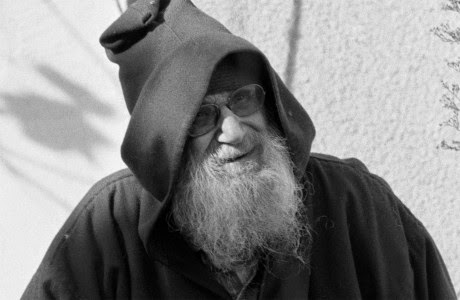Alexander Grothendieck: Mathematician Extraordinaire
The lion in winter: Grothendieck in old age
Mathematicians and theoretical physicists fascinate me. This is because, I can imagine myself, if I work hard enough, sometime solving a biological conundrum, or evaluating a chemical compound. But the idea of sitting with a piece of paper and pencil and calculating away for days or months or years and then coming up with a proof of an esoteric mathematical problem, or a theory to explain an observation made in deep space seems to me to be more like magic. Anybody who can do this, in my opinion is made of stuff that I cannot even imagine, let alone ever to hope to emulate.
There are several such mathematicians. One of them passed
away last November. I refer to Alexander Grothendieck who passed away on the 13th
of last month. Grothendieck was the mathematician par excellence. He embodied
all that is mysterious and unknowable about these “beautiful minds” as somebody
picturesquely described another mathematician.. He was perhaps the greatest
mathematician of the twentieth century and his passing is, though it may sound
clichéd, really the passing of an era.
Born of anarchist parents in the Germany of the inter war
years, Grothendieck was a Jew at a time and place when it was the most
dangerous to be one. They escaped to France but that did not prevent the death
of his father in Auschwitz. He studied in the University of Montpellier and
then in Paris during the Second World War and just after it. Even during his
school days he was dissatisfied with the state of Geometry as he found it. He
wrote “What was least satisfying to me
in our high school mathematics books was the absence of any serious definition
of the notion of length of a curve, of area of a surface, of volume of a solid.
I promised myself I would fill this gap when I had the chance” During his
university days he came up with a general version of the Lebesgue integral,
working all alone with no supervision. Lebescgue himself described this
integral as follows in a letter written to one of his colleagues: “I have to pay a certain sum, which I have
collected in my pocket. I take the bills and coins out of my pocket and give
them to the creditor in the order I find them until I have reached the total
sum. This is the Riemann integral. But I can proceed differently. After I have
taken all the money out of my pocket I order the bills and coins according to
identical values and then I pay the several heaps one after the other to the
creditor. This is my integral.”
I do not pretend to really understand all this, but the crux
is that Grothendieck immediately showed his genius and went on to redefine the
frontiers of algebra and geometry. It is said that he was an immensely
charismatic person. In 1958 he set up a team of mathematicians who met 10 hours
a day, 5 days a week for more than a decade to create a new foundation for
geometry. It said that he talked; others took notes, filled in the details and
returned the next day for more ideas. One of his colleagues, Jean Dieudonne, a
prominent mathematician in his own right, immersed himself totally in the
project, arriving at his desk at 5 AM every morning so that he could do three
hours of editing before the seminars started at 8 AM.
Grothendieck was genius of generalizing a problem. Whenever
he was confronted with a problem that seemed unsolvable, he simply “zoomed
away” from the problem and attempted to generalize it . This led to some
amazing insights which, as I said earlier, made him the doyen of mathematicians
and got him the Field medal in 1966. He, however, refused it.
Grothendieck , as one mathematician has put it “rewrote the foundations of geometry not just
once, but three times, first replacing classical geometry with his “theory of
schemes” —and then going on to the “theory of toposes”, and finally the great
unfinished “theory of motives”. One of the great goals of contemporary
mathematics is to complete that final theory, which, if our expectations are
correct, would give us the tools to settle many of the hardest outstanding
problems in several areas of mathematics.”
“When he was just in
his early twenties, he wrote a doctoral thesis in the subject of “functional
analysis” that provided new tools so powerful that they left almost no problems
in that field left to solve. He then went off searching for a new field vast
enough to contain his talent, and found it in algebraic geometry. In the days
of the Seminaire de Geometrie Algebrique, where he spent most of his working
life, he reportedly worked 18 hours a day, 7 days a week, 10 years per decade.”
Unfortunately as the sixties ended, he withdrew from the
world of mathematics to embroil himself in politics and self-examination. It is
said that he was scarcely sane during the last years of his life. He died on
the 13 November 2014, aged 86, in Saint-Lizier, Ariège, France.



Comments